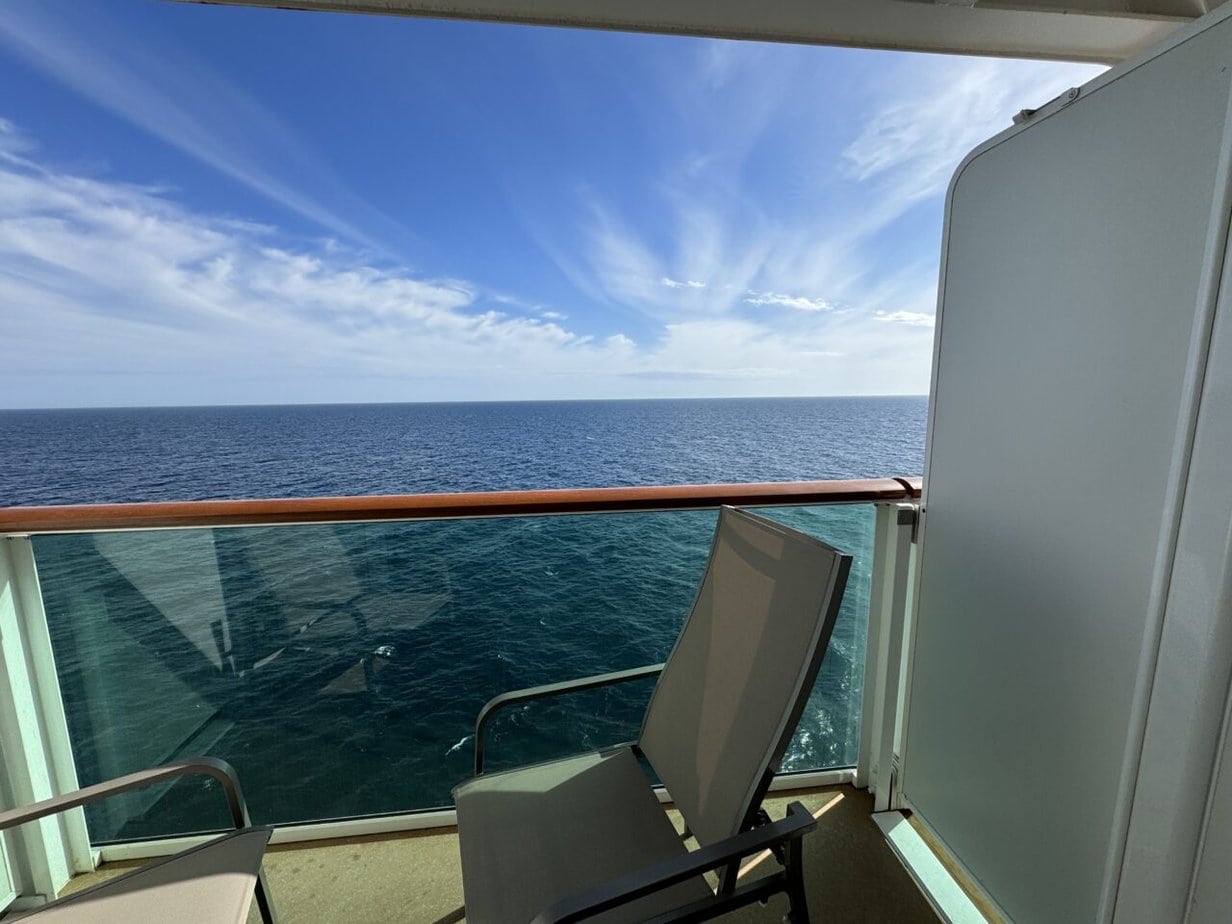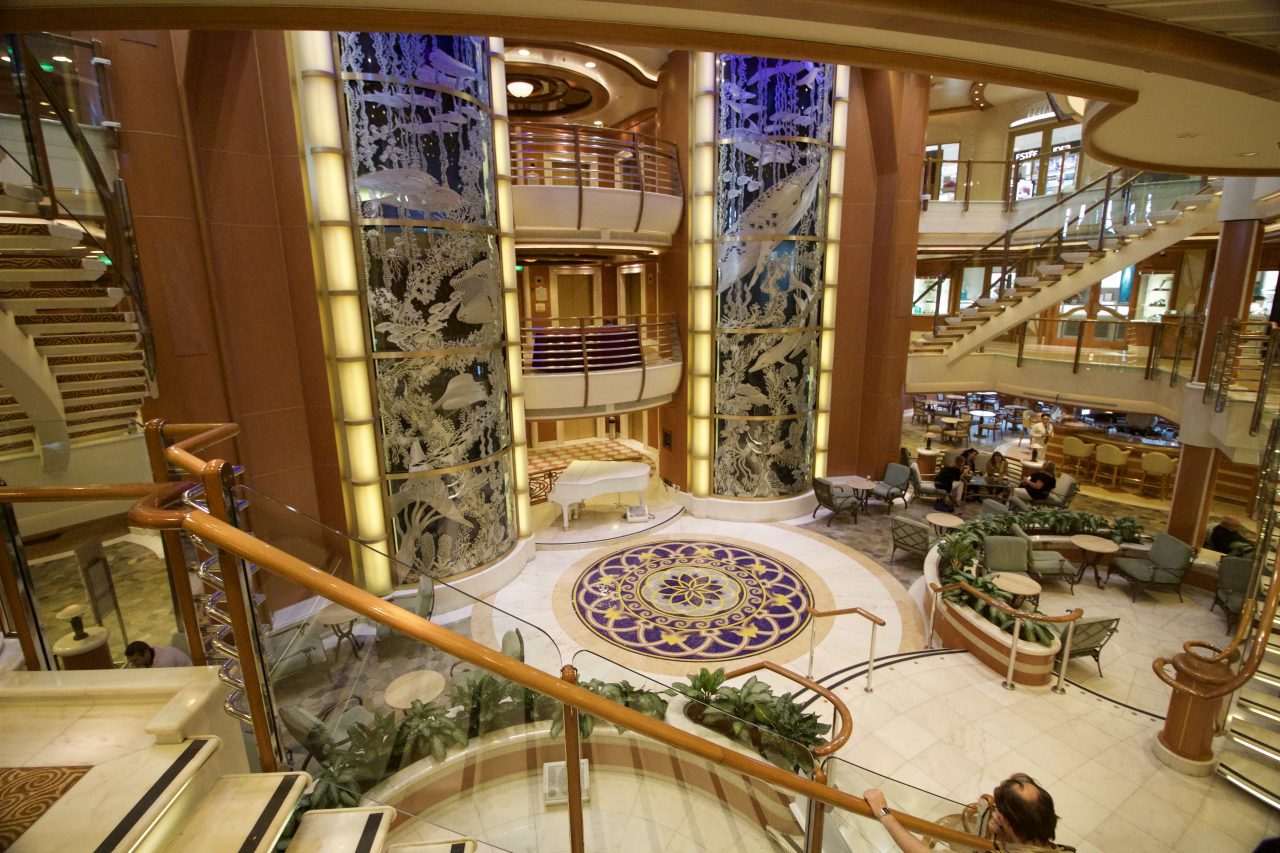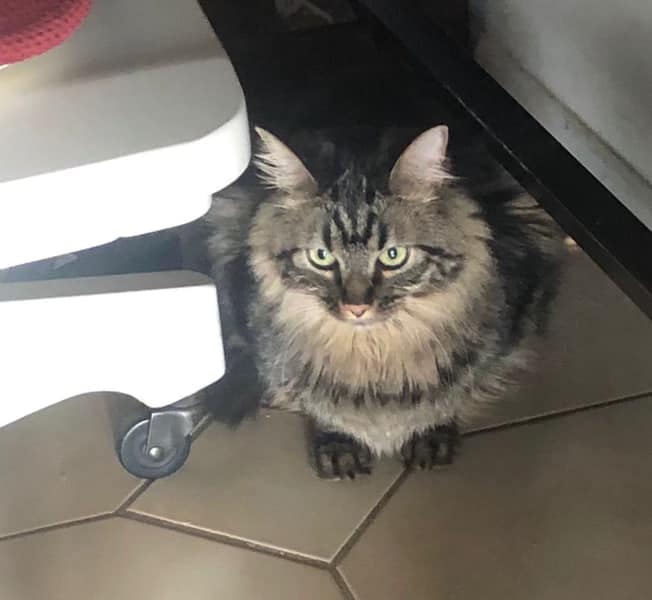Smoking Everywhere!
The days of being able to smoke freely onboard cruise ships are long gone.
On the Titanic, there were a couple of non-smoking rooms, but apart from that, you could smoke pretty much everywhere.
Smoking is banned in and around cruise ships, on balconies and cabins – with a few notable exceptions. There are designated smoking areas onboard.
A few cruise lines still allow passengers to smoke on their balconies. Find out about that here:
Cruise Line Balcony Smoking Policies – On These Four Lines You Can Still Smoke On The Balcony

The majority of ships have designated smoking areas. These are often in a corner of the pool deck, or in cigar lounges.
Electronic Cigarettes/Vapes are treated the same way as Cigarettes, and can not be used freely onboard.
Some ships still have cigar lounges such as Churchill’s Cigar Lounge on Cunard’s Queen Mary 2, or Humidor Cigar Lounge on Norwegian Cruise Lines for those guests who enjoy a drink and a cigar during their cruise.
Another place some cruise lines do allow smoking is in their casinos. Clearly, this is a ploy to keep guests gambling and staying at the tables – and spending money!
Cruise ship casinos aren’t open all the time, they have to wait until the ship is at sea. Often the ship has to be twelve nautical miles out at sea when they will be in international waters and don’t have to abide by the gambling laws of the countries they visit.
Find out more about gambling and casinos onboard cruise ships here:
Can You Gamble on a Cruise at 18? Cruise Line Gambling Guide
In the UK a ban on smoking indoors in public places came into effect in 2007, so British citizens are well used to not being able to smoke inside, and probably wouldn’t expect to be able to smoke on cruise ships.
In the USA rules vary from state to state, but many have Laws about smoking in public places.
In 2006 a serious fire occurred onboard the Star Princess, the cause was thought to be a discarded cigarette from one of the ship’s balconies. The blaze destroyed 23% of her cabins.
This fire was a big wake-up call for the cruise industry, and industry-wide changes were made regarding materials used onboard, and sprinklers were installed on balconies.
Find out more about that fire here:
Dumping Waste Directly Into The Ocean
Cruise ships are not legally allowed to dump rubbish/ trash into the sea, as they once did.
Most cruise lines have begun recycling their plastic, cardboard, and glass, which is sorted and stored until they reach the next port to offload.
Some non-recyclable products are compacted and placed on pallets to be offloaded as well.
It’s important to note that there are cruise ships that have been caught discarding rubbish/trash into the ocean – which is illegal and increases plastic pollution that can choke and kill marine wildlife.
Waste Water
Many of the mainstream cruise lines treat wastewater onboard. It is separated into
- Black Water – Contaminated water coming from toilets and urinals
- Grey water – from showers, basins, baths etc. Still contaminated, but not containing any harmful sewage.
Once it has been treated at the wastewater treatment plant onboard, it is discarded into the ocean. According to Friends of the Earth, the ships must be three and a half miles offshore to do this.
Rubbish/Trash
Recyclables are separated and offloaded when the ship reaches port.
Reusable plastics, glass containers, and metal tins/cans are all cleaned and stored whilst the ship is sailing. These are recycled when the ship reaches land at the appropriate recycling facilities.

Food Waste
Most cruise ships have pulpers or biodigesters that deal with leftover food. Food waste is then often discarded into the ocean.
Biodigesters use microorganisms and other bacteria to rapidly process food waste much like a human digestive system might, The way we tend to describe it is just basically as a metal stomach. What goes in as salad or steak comes out as a smoothie-like mixture the cruise ship can then discharge. If you can eat it, it can eat it…
Bob Joyce, Director of Technology Operations, Carnival Cruises
The company discharges the waste food liquid at least 12 miles from shore.

Friends of the Earth unsurprisingly have a different take on food being discharged into the ocean.
Cruise ships have an estimated food waste around 30% — and they often call the liquified waste disposal “fish food.” Unsurprisingly, the food served on a cruise ship is not typically part of a fish’s natural diet.
Friends of the Earth
Our fruits and vegetables are often treated with pesticides and our meats and proteins are generally treated with antibiotics and hormones — which again are not typically part of a fish’s diet.
Although cruise lines are making huge improvements to their waste management systems, many lines have been fined for illegally dumping waste.
Bringing Guests Onboard to Visit
There was a time when guests could invite family and friends onboard the ship to have a look around. With increased security in recent decades, you can no longer do this.
In the days of the Ocean Liners, people would often come on board with their friends and family, look at the cabins, and wander around the ship.
There would be an announcement made for visitors to leave the ship half an hour or so before the ship sailed, often “All ashore that’s going ashore.” These guests would then disembark.

Heightened security due to terrorist incidents in recent decades means that cruise lines don’t want random people wandering around their cruise ships – quite understandably!
Ocean Liners do still exist but are very different to cruise ships. Find out how here:
Ocean Liners, They Still Exist: Here’s Everything You Need to Know
Clay Pigeon Shooting off The Deck
Clay pigeon or Skeet shooting first became popular on cruises in the 1920s. Guests would shoot over the stern of the ship, and the clay pigeons and shotgun pellets would fall into the ocean.
Clay pigeons/ Skeets look like small, upside-down plates and are made from a mixture of clay, pitch and chalk. They are designed to withstand being launched from a clay pigeon trap at high speeds, but also easily break when hit by just a very few pellets shot from a shotgun.
In past decades people were less environmentally aware, and the implications of dumping clay targets and lead shotgun pellets into the sea wasn’t seen as an issue.
Skeet and clay pigeon shooting on cruise ships stopped in the 1990s.
It became less popular in the 1980s due to concerns over safety and environmental reasons.
Modern-day health and safety wouldn’t allow passengers to wield shotguns, particularly when they might have been drinking! No shooting games with real firearms are allowed onboard cruise ships now.
Finding Other Guests on The Passenger List
When people used to emigrate in large numbers from one country to another, they used to do so mostly by Ocean Liner.
The ships they were sailing on compiled ship lists. These contained information such as:
- Age
- Who they travelled with
- Which class they travelled in, first class or steerage
- The port they sailed from and to
- Sometimes a physical description.
These lists stopped with the end of mass immigration in the 1960’s.
In the early days of cruising, the cruise line would compile a list of guests and crew on a given sailing and distribute it across the ship. It would include the name of each guest, and where they came from.
The idea was that they would make it easier for guests to get to know their fellow passengers, and the list, which was in a book form (similar to a phone book) could be taken home at the end of the voyage as a souvenir.
Lists were given to passengers aboard Ocean Liners and cruise ships until the 1970s and 1980s.
When cruise lines started to give the passengers an option as to whether to appear on the passenger list or not, they found many people opted out, making the incomplete list less useful.
Cruise lines would never consider doing anything like this now, even if they wanted to. Privacy laws and data protection would prevent them from doing so.


The Images above are courtesy of Royal Caribbean Blog
To find out more about passenger lists distributed by Royal Caribbean in the 1970s and 80s, read the article below:
Royal Caribbean Blog – Passenger-lists-sovereign-of-the-seas
Bringing Onboard Exotic Animals or Pets
The only animals you can bring onboard a cruise ship are assistance dogs, by prior arrangement. In the past, some Ocean Liners often carried collections of exotic animals onboard.
- Onboard Menageries – Luxury liners, especially those on transatlantic routes, sometimes featured small collections of exotic animals.
- These were intended as a form of entertainment and spectacle for passengers.
- Famous Examples – One of the most notable examples was the German liner SS Bremen, which reportedly had a small zoo onboard in the 1930s.
- Passengers could visit and view a variety of exotic animals.
- Animals as Luxury Attractions – Having exotic animals on board was seen as a symbol of opulence and luxury.
- It added to the allure and uniqueness of the travel experience on these grand liners.


Before You Go
Someone recently smuggled a pet cat onboard Royal Caribbean’s Ovation of the Seas. Find out what happened here:
Cat Smuggled onto Cruise Ship in Sweatshirt – Discovered by Authorities
The last Ocean Liner in service, Queen Mary 2 has kennels onboard and allows passengers to bring their dogs on transatlantic crossings. Find out more about that amazing ship here:
Queen Mary 2, Cruise Review: Ship, Food, Entertainment and More

Free Insiders Cruise Line Guide
Ever wondered how the mainstream cruise lines compare? Cruise lines won’t tell you this, but I will.
This FREE guide shows you everything you need to know to find your perfect cruise line.
